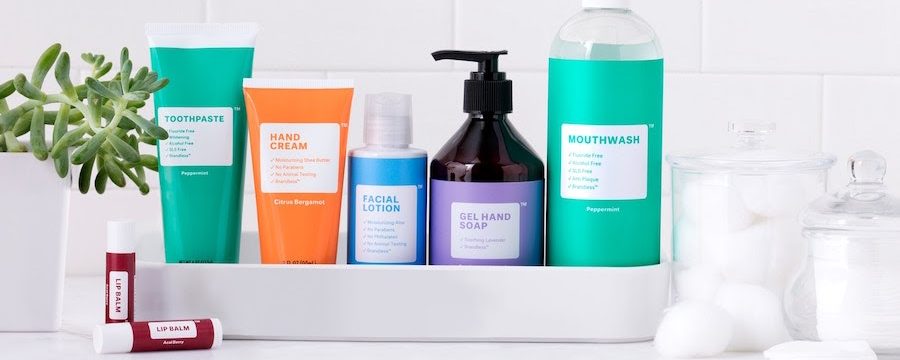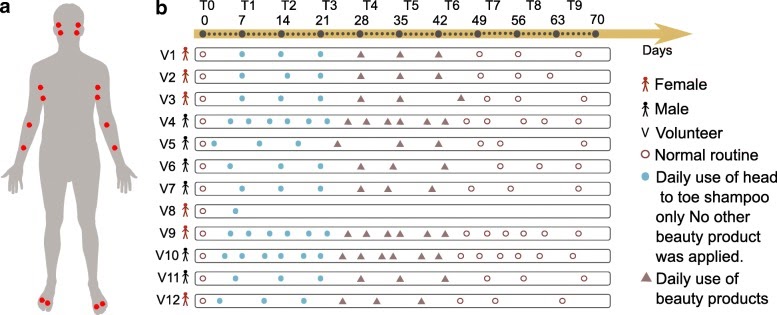By Stephanie Jue
Skincare has become all the rage –– Vogue skincare routines plaster YouTube homepages and bottles of similarly-branded products advertising the same age-reducing effects line the shelves of local stores. It seems like brands are always coming up with more and more permutations of the same ingredients you might religiously rub into your skin each morning and night. Serums, toners, and moisturizers are now the basic cornerstones of complex, nine-step regiments. So, what’s with the hype, and is it all really that important?
The effects of the products we apply to our skin aren’t just skin-deep — they’re pretty significant, especially for our skin chemistry and microbiome. Skin turnover, or the rate at which a new skin cell develops, takes 21 to 28 days, meaning that products we apply to our skin can take just as long –– if not longer –– to fully disappear. Healthful bacteria on our skin protect us from our environment, and the pigment melanin in our cells has been shown to protect our skin from UV rays. While we may wake up radiating because of serums we apply the night before, what we do to our skin affects bodily functions and environments we can’t even see, namely, our skin composition––after all, we have 1.5 trillion microorganisms on our skin that might be affected! Our skin is the most exposed organ to our external environment, and our microbiome serves as a complex and important first line of defense.
While studies have suggested that skincare can indeed contribute to elasticity, smoothness, and increased skin regeneration in the short term, there is little research done on the effectiveness of particular skincare routines in the long run.
A recent study attempted to find correlations between personalized and changing routines and the resulting effect on the skin. The study consisted of 11 individuals and tested a changing skincare routine that included a facial lotion, a moisturizer, a foot powder, and a deodorant. For the first six weeks of the experiment, individuals shared the same routines, with consistent routine changes. The remaining three weeks consisted of reversion back to the individuals’ own personal skincare routines. At specific intervals over nine weeks, individuals were swabbed for persistence of chemicals on the skin, as well as microbiome composition (see Figure 1).
Figure 1: A diagram indicating where samples were taken (a) and times when skincare regimens were enforced per study participant (b).
Results showed that molecular diversity, or the number of different molecules and chemicals on our skin, and quantity increased almost instantaneously with the number of products used. Traces of product chemicals were also shown to remain on the skin for at least a week despite regular showering, and chemicals could be found on other parts of the body where product hadn’t been applied. This indicates that the chemistry of different regions of the skin may be interconnected.
While molecular and bacterial makeup shifted quickly with each change and over time, microbiome structures reverted to their original state after discontinued product use. This implies that the microbiome is generally stable over time, even despite changing conditions. Ultimately, however, the unique changes of molecular diversity and bacteria over time fluctuate based on the regimen, the area tested, and the individual, showing how skin molecular and bacterial composition is highly variable and dependent on a number of factors.
While the study does suggest that what we put on our skin is important, that doesn’t imply we need to immediately jump on the bandwagon of following trending beauty routines or adhering to expensive celebrity skincare tips. Each individual’s skin chemistry and microbiome varies, so not everyone will benefit from the same regimen. If what you’re doing works for you, just keep in mind that what you’re putting on your skin may affect more than your skin’s surface.
But, ultimately, there’s no one personal skin care routine that is better than the others, and to each their own. After all, personal skin care routines are, well, personal!
Works Cited
Bouslimani, A., da Silva, R., Kosciolek, T., Janssen, S., Callewaert, C., Amir, A., Dorrestein, K., …Dorrestein, C. P. (2019). The impact of skin care products on skin chemistry and microbiome dynamics. BMC Biology, 17(47). https://doi.org/10.1186/s12915-019-0660-6
Brenner, M., Hearing, J. V. (2007). The Protective Role of Melanin Against UV Damage in Human Skin. Photochemistry and Photobiology, 84(3), 539-549. https://doi.org/10.1111/j.1751-1097.2007.00226.x
Ganceviciene, R., Liakou, I. A., Theodoridis, A., Makrantonaki E., Zouboulis, C. C. (2012). Skin anti-aging strategies. Dermato-Endocrinology, 4(3), 308-319. https://doi.org/10.4161/derm.22804
Micropia. (n.d.). On and in you your body full of microbes. https://www.micropia.nl/en/discover/stories/on-and-in-you/
Science Learning Hub Pokapu Akoranga Putaiao. (2010, November 2). The body’s first line of defence. https://www.sciencelearn.org.nz/resources/177-the-body-s-first-line-of-defence


